Flowers are not merely a lovely sight; they also have a significant impact on our lives. Flowers have a significant role in our culture and customs, serving as a representation of the life cycle as well as a symbol of love and thanks.
The interesting world of “Flowers That Start With E” will be explored in this blog post. This post will stimulate your interest and motivate you to find out more about the varied flora nearby, whether you are an enthusiastic gardener or simply admire the beauty of nature.
We will explore the history, symbolism, and distinctive qualities of these stunning blossoms, ranging from the iconic grace of the Easter Lily to the mesmerizing exoticism of the Eustoma.
Therefore, let’s go on a discovery-filled voyage and explore the world of Flowers That Start With E.
Keep Reading:
- Flowers That Start With A
- Flowers That Start With B
- Flowers That Start With C
- Flowers That Start With D
- Flowers That Start With F
List Of Flowers That Start With E
1. Evolvus
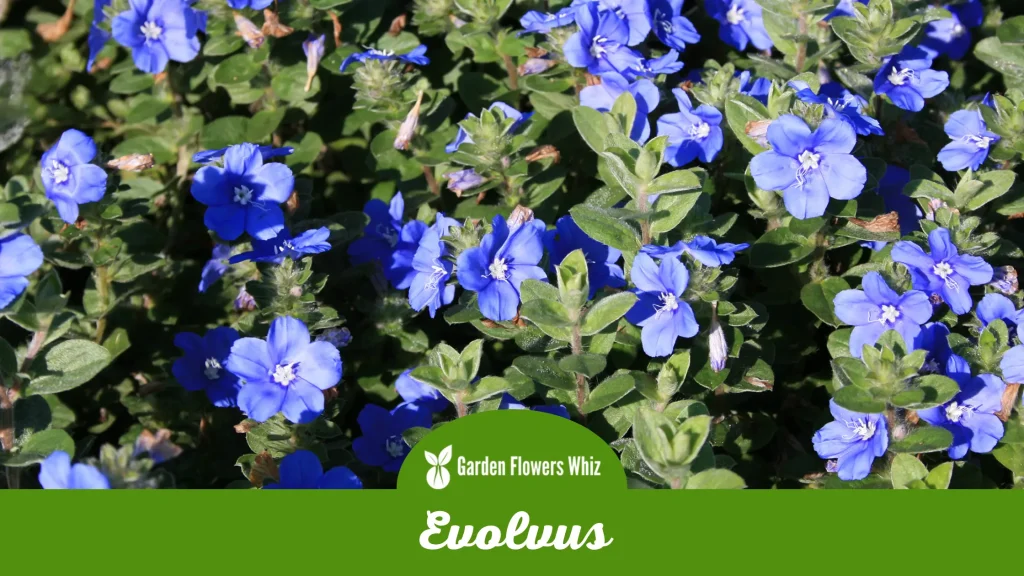
The little yet endearing perennial plant Evolvus, also known as Evolvulus glomeratus, is indigenous to Brazil. It is a member of the morning glory family and blooms all summer long with small, sky-blue flowers.
The plant’s slender, silvery-green leaves make a lovely backdrop for the colorful blooms, which have funnel-shaped, one-inch-diameter blossoms.
Evolvus is an excellent choice for use in rock gardens, borders, and containers because it requires little maintenance and is simple to care for.
The plant is an essential part of neighborhood ecosystems because it provides nectar to a variety of pollinators, such as bees and butterflies.
2. Everlasting Flower
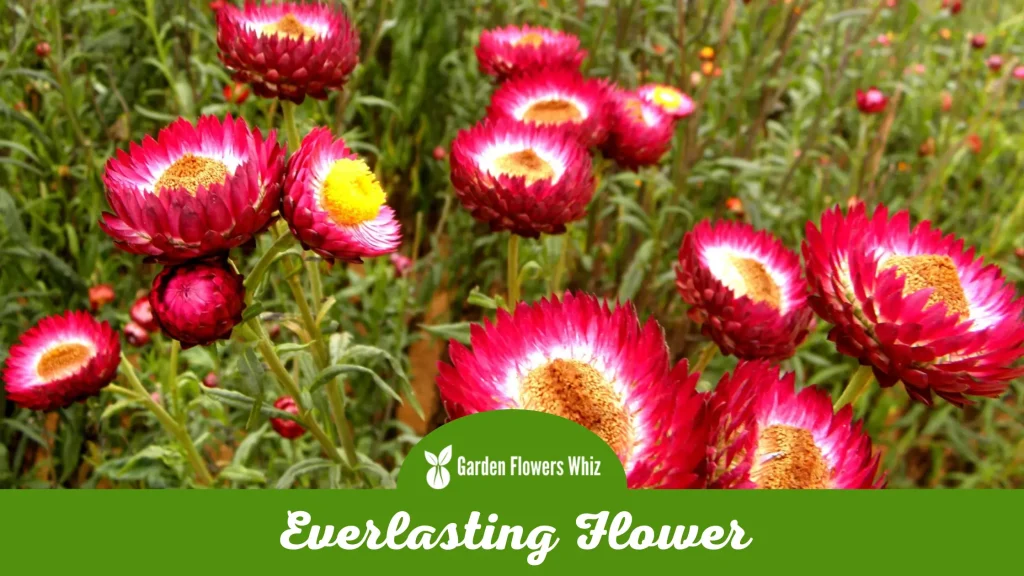
Australian native Everlasting Flower, also known as Helichrysum bracteatum, is a stunning and resilient annual plant. It belongs to the sunflower family and produces colorful, spectacular flowers that are great for dried flower crafts and cut flower arrangements.
The plant’s blossoms can bloom from mid-summer until the first frost and come in a variety of hues, including yellow, orange, pink, red, and white.
The plant’s essential oil is utilized in aromatherapy and topical therapies and has been demonstrated to have anti-inflammatory and analgesic qualities.
Everlasting Flower is a resilient plant that requires little maintenance and is a great choice for beginning gardeners. It is a beneficial plant for local ecosystems as well because a variety of pollinators, such as bees, butterflies, and hoverflies, are drawn to its nectar-rich blossoms.
3. Everlasting Daisy
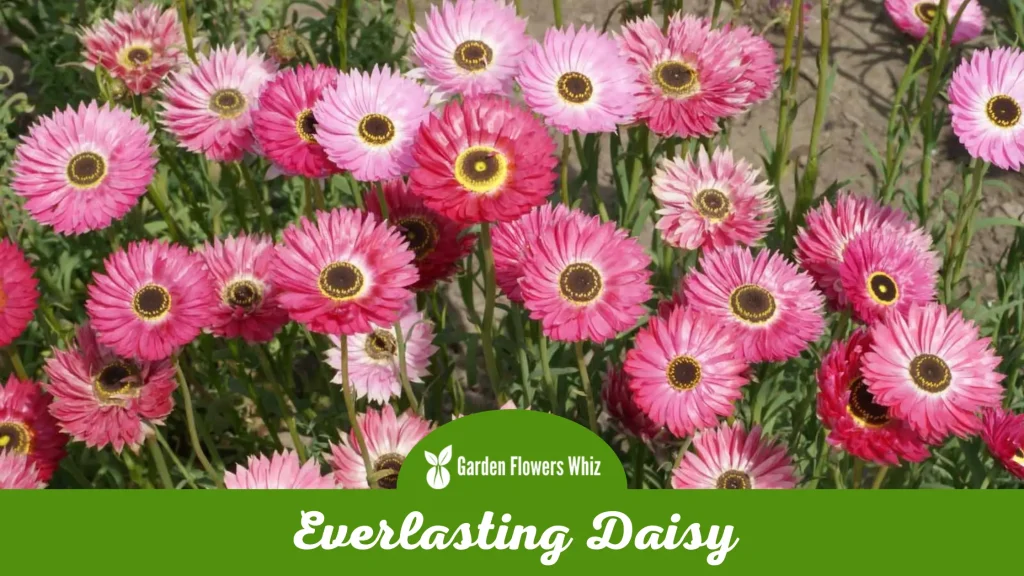
The beautiful and vibrant flowering plant known as Everlasting Daisy, also known as Xerochrysum bracteatum, is indigenous to Australia. It is a member of the daisy family and produces masses of colorful, long-lasting flowers in shades of yellow, orange, pink, and white that keep their shape and color even after drying.
The plant is a great option for dried flower crafts and cuts flower arrangements since its blossoms are held on tall stems that may grow up to two feet tall.
The plant is an essential part of the local ecosystems because it provides nectar to a variety of natural animals, such as bees, butterflies, and birds.
For xeriscape gardens and landscapes, Everlasting Daisy is a robust, drought-tolerant plant that is simple to grow and maintain.
Being the official floral emblem of the Australian Capital Territory, it is also a well-liked option for neighborhood beautification initiatives and as a representation of national pride.
4. Evening Primerose
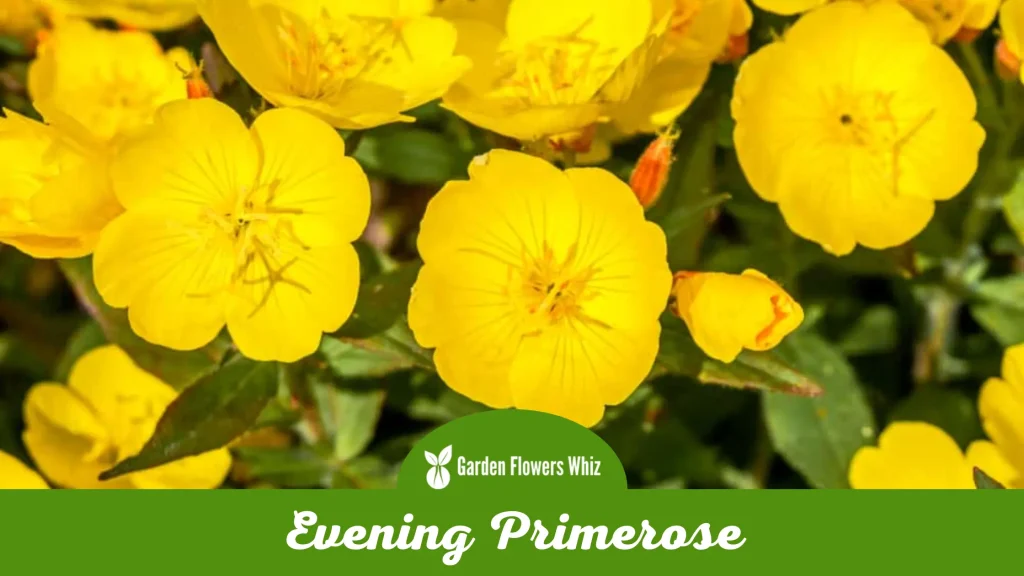
Oenothera biennis, or evening primrose, is a biennial plant that is indigenous to North America. The plant gets its popular name from the huge, conspicuous yellow flowers that bloom in the late afternoon and evening.
The nectar-rich flowers draw a variety of pollinators, including as bees and moths. As a resilient and adaptable plant that is simple to cultivate and maintain, evening primrose is a preferred option for home gardens and landscapes.
It is a useful plant for sustaining regional ecosystems as well since it supports pollinators with nectar from its flowers and supports a variety of little insects with its leaves and stems.
5. Eve’s Needle Cactus
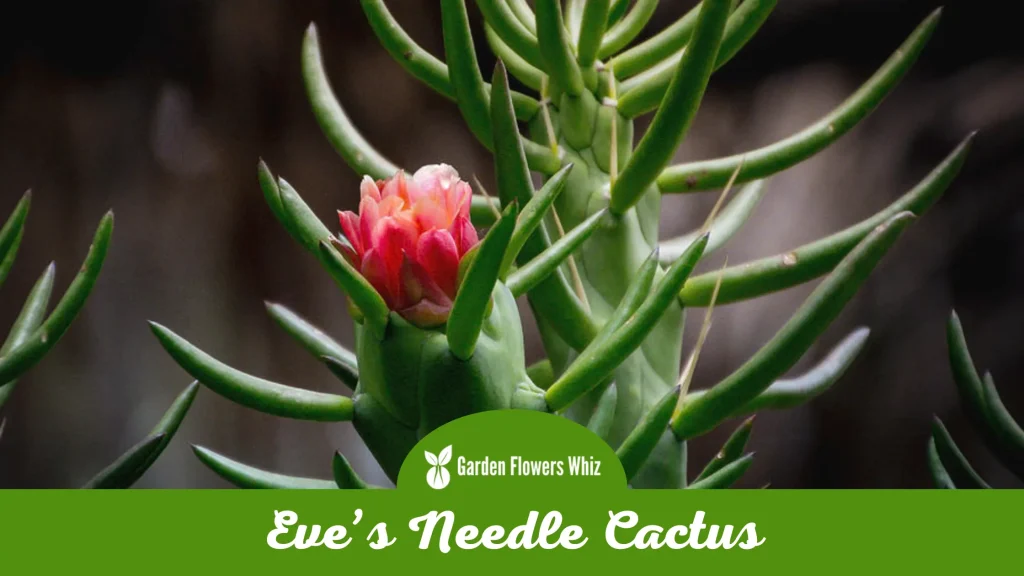
Austrocylindropuntia subulata, often known as Eve’s Needle Cactus, is a stunning cactus species that are indigenous to South America. The name of this plant refers to the clusters of long, thin, needle-like spines that grow along the length of its stems.
This cactus has small, inconspicuous white or yellow blooms that bloom in the late spring and summer on vertically growing stems that can grow up to several feet in height.
Eve’s Needle Cactus is a well-liked cactus for xeriscaping and drought-tolerant landscaping despite its intimidating appearance since it is durable and needs very little water or upkeep.
It is also a well-liked option for home decoration and container gardening. The plant adds beauty to any succulent garden or desert-themed environment because of its characteristic spines and vertical growth pattern.
Indigenous peoples in South America have utilized the plant’s spines for generations to construct fishing hooks and needles. The plant’s young stems and blooms, which are edible in both cooked and uncooked forms, are also edible.
6. Eustoma
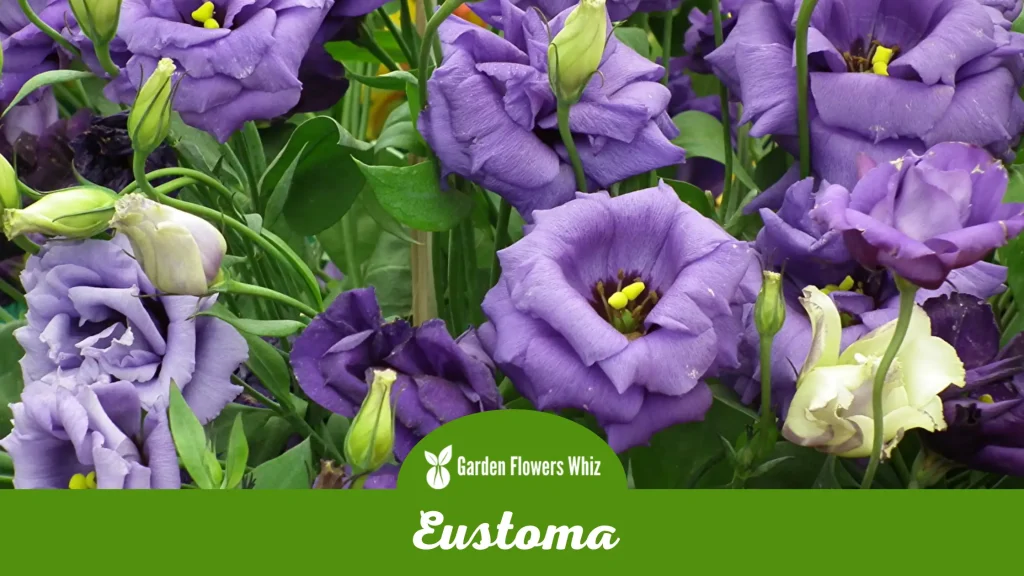
The lovely and delicate flowering plant known as eustoma, or lisianthus, is indigenous to Mexico, the southern United States, and northern South America.
It produces graceful, cup-shaped flowers in white, pink, lavender, and purple with ruffled edges. Eustoma flowers have a long vase life and make a beautiful presentation. Therefore, they are frequently used in floral arrangements and bouquets.
Because to its simplicity in cultivation and maintenance, eustoma is a beloved plant among gardeners and flower enthusiasts. The plant may take little shade but does best in well-draining soil and full light.
It’s a low-maintenance plant that needs watering and fertilizing on a regular basis to survive.
The plant has a significant role in local ecosystems since it is a significant source of nectar for pollinators like bees and butterflies.
7. Euphorbia cyathophora
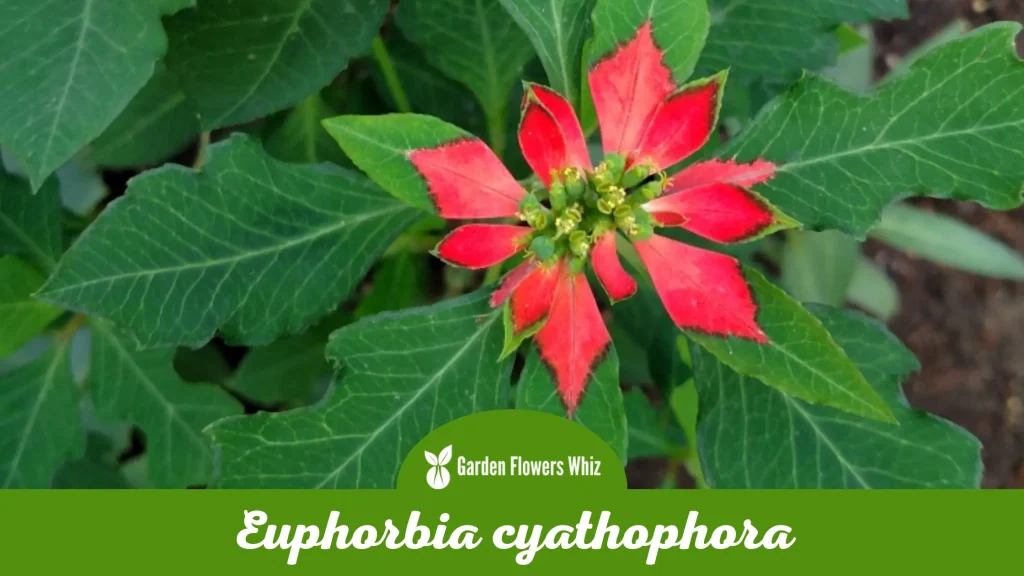
The beautiful annual plant Euphorbia cyathophora often called fire-on-the-mountain or wild poinsettia, is indigenous to the southern United States, Mexico, and Central America.
The plant produces small, greenish-yellow blooms surrounded by brilliantly colored bracts in colors of red, orange, and yellow. The plant’s popular name, “fire-on-the-mountain,” derives from the bracts’ unusual conical arrangement.
In the summer and fall, the plant blooms, adding a pop of color to the garden. The hardy plant Euphorbia cyathophora is simple to grow and maintain.
It can survive a wide variety of temperatures and soil types but likes full sun and soil with good drainage. The plant is frequently utilized in rock gardens, boundary plants, and container gardens because of its striking colors.
The plant should be handled carefully though, as some people may experience allergic reactions and skin rashes from its sap.
8. Erigeron
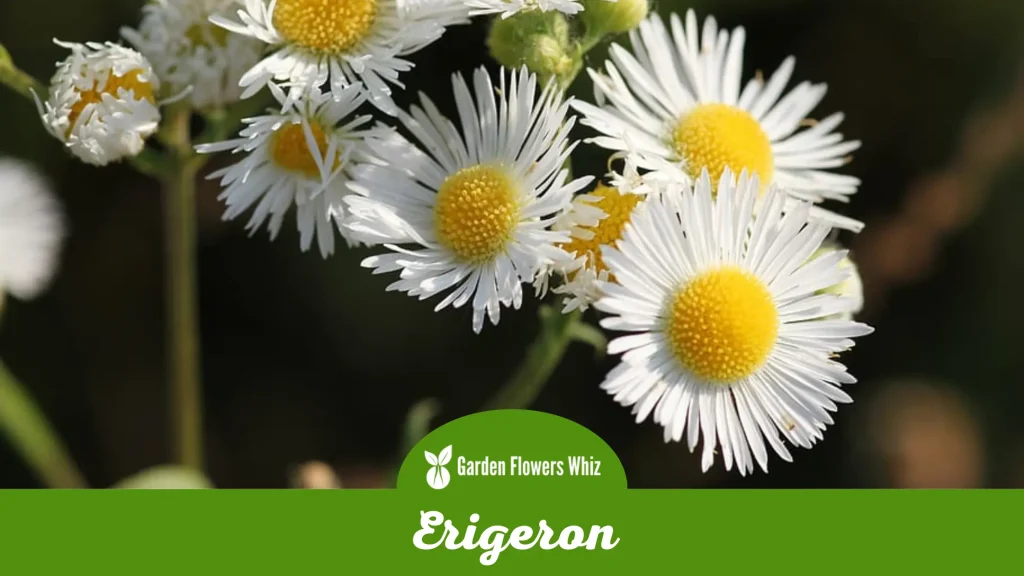
Almost 400 different annual and perennial flowering plant species make up the genus Erigeron. These plants also referred to as fleabane, are indigenous to a variety of environments, such as meadows, prairies, and alpine regions.
Throughout the spring and summer, they produce tiny, daisy-like flowers in pink, purple, and white hues.
Gardeners love Erigeron because it is simple to grow and maintain. The plant may take little shade but does best in well-draining soil and full light.
It’s a low-maintenance plant that needs watering and fertilizing on a regular basis to survive. Bees and butterflies, among other pollinators, depend on the plant for nectar.
Erigeron is an appealing and adaptable plant that can be utilized in a range of gardening and landscape projects. It is a preferred option for borders, rock gardens, and container plantings due to its compact size and ease of maintenance.
9. Erica
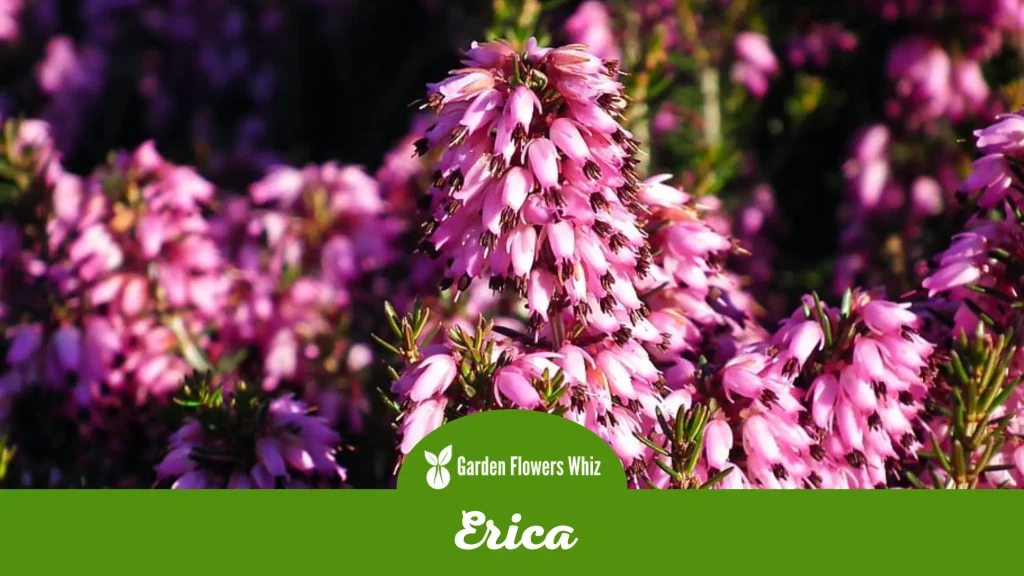
The family Ericaceae, also known as the heather family, has a sizable genus of flowering plants called Erica. Many different locations of the world, including Europe, Africa, and some of Asia, are home to this diverse group of plants.
The majority of Erica species are small to medium-sized evergreen shrubs with needle-like leaves and tiny, bell-shaped blooms in pink, white, and purple hues.
Gardeners like erica because it’s reasonably simple to grow and care for. The plant may take little shade but does best in well-draining soil and full light.
It is a hardy plant that can endure a variety of soil types and temperatures. Because of its evergreen leaves and vibrant blossoms, erica is frequently utilized in landscaping and gardening projects.
The plant’s tiny blossoms provide texture and beauty to bouquets, making floral arrangements with it popular as well. Overall, Erica is a valuable plant that is admired for both its attractiveness and usefulness.
10. English Daisy

The annual flowering plant known as the English Daisy, or Bellis perennis, is native to Europe but has since been naturalized in many other regions of the world.
It is a tough plant that is well-known for its cheery, vivid daisy-like flowers, which come in a range of hues, including pink, white, and red.
The blooms are composed of many layers of petals with a yellow center. English Daisy plants are a great option for ground cover since they spread readily and grow at a low height of only 6 inches.
They are also well-liked plants for use as borders and containers in gardens. Throughout the growing season, the plant continuously produces fresh flowers and blooms from early spring through the summer.
Although it requires only routine watering and fertilizing to survive, the English Daisy is a comparatively low-maintenance plant. Although it loves partially shaded areas with well-draining soil, it may take full sun in colder climates.
11. English Bluebell
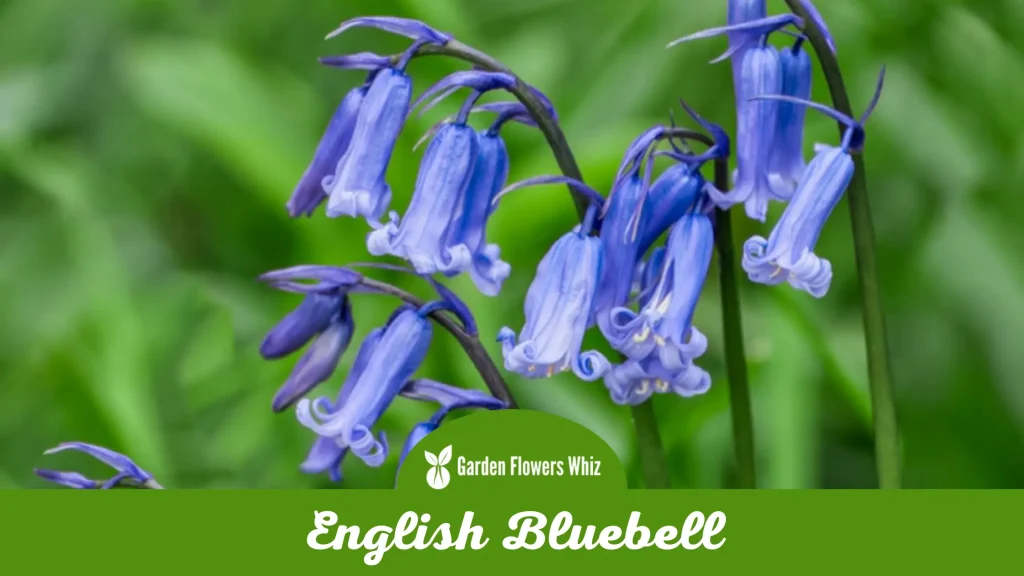
Hyacinthoides non-scripta, often known as the English Bluebell, is a perennial flowering plant that is native to Europe but is also widespread elsewhere in the world.
The bloom, which is shaped like a bell and is available in colors blue, violet, and white, is what the plant is famous for. The English Bluebell is well-liked in gardens and forest areas and is a protected species in the UK.
Typically low-growing, English bluebell plants have narrow leaves up to 30 cm long. Throughout the spring and early summer, they bloom, resulting in clusters of scented flowers that dangle from the stem.
It is generally low-maintenance once established, preferring wet, well-draining soil and moderate shade. Yet it’s vital to remember that the plant should be treated carefully because it is poisonous if consumed.
12. Elecampane

The perennial blooming plant elecampane, sometimes called Inula helenium, is indigenous to Europe and some regions of Asia. It belongs to the Asteraceae family and is related to flowers like daisies and sunflowers.
Tall stems, broad leaves, and vivid yellow blooms are the plant’s most distinctive features. Large, beautiful flowers that the plant produces are appealing to pollinators like bees and butterflies.
Its hardiness and ability to thrive in a variety of soil types and lighting situations make it a flexible option for gardens and landscape projects.
13. Egyptian Star Flower
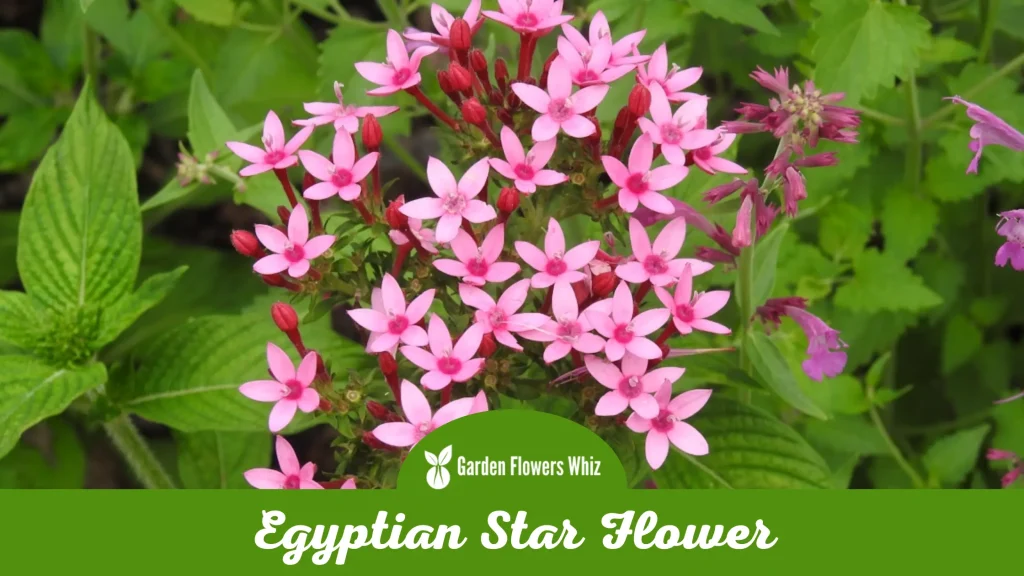
Pentas lanceolata, often known as the Egyptian Star Flower, is a perennial flowering plant that is indigenous to Africa. It belongs to the Rubiaceae family, which also includes garden favorites like coffee and gardenia.
The gorgeous star-shaped blossoms of the Egyptian Star Flower, which appear in pink, red, and white hues, are what makes it famous.
The plant’s lovely blossoms, lengthy flowering season, and low maintenance needs make it a popular option for gardens and landscape projects.
It may survive in a variety of soil types and lighting situations, but the Egyptian Star Flower thrives in well-draining soil and partial shade.
It is also a well-liked option for hanging baskets and container gardens. It is a popular alternative for treating infections and other inflammatory diseases since it is thought to have anti-inflammatory and anti-microbial qualities.
14. Echium
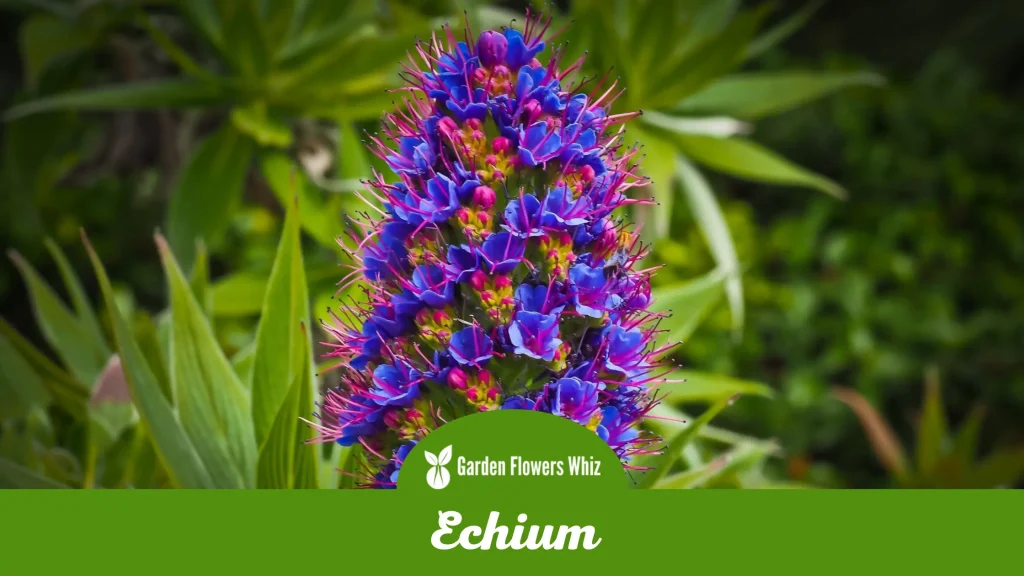
Around 60 species of flowering plants belong to the genus Echium, many of which are indigenous to the Mediterranean region. Echium vulgare often called viper’s bugloss, is the most well-known species and is distinguished by its vivid blue or purple blossoms.
The biennial or perennial plant develops long, straight stems that can grow up to 1.2 meters in height. Echium plants are frequently cultivated for use in landscaping and gardening.
These are resilient plants that can grow in a variety of soils and lighting situations, but they thrive in well-draining soil and direct sunlight. Several species are also used to make herbal medicines and essential oils.
15. Echinopsis
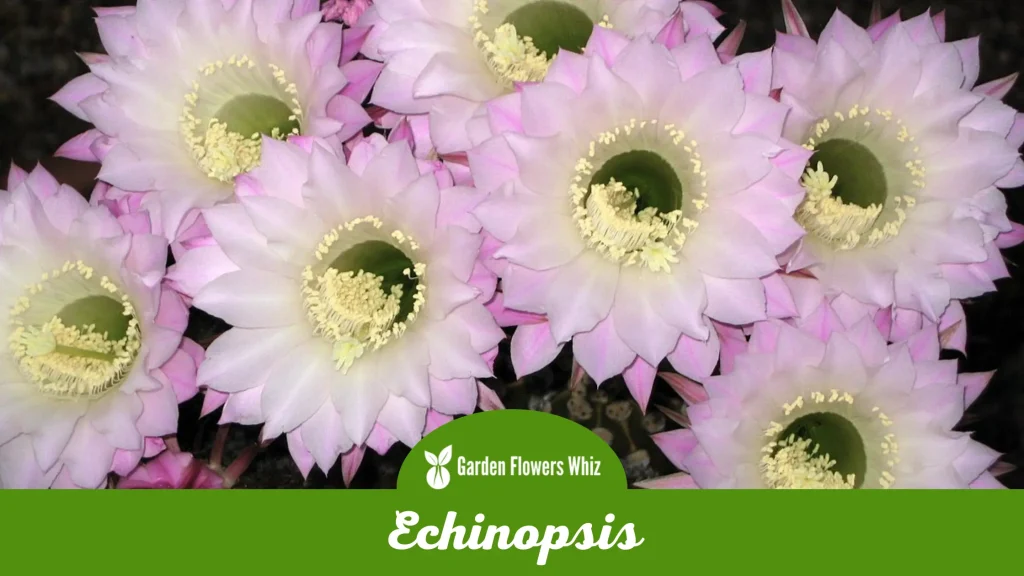
The genus of cactus plants known as Echinopsis is indigenous to South America. It is renowned for its enormous, eye-catching flowers, which come in a variety of hues, including white, pink, red, and yellow.
The plant’s blossoms are distinctive and remarkable since they are only open at night and bloom for a short time. Indoor or outdoor gardens both frequently feature echinopsis plants.
Although they thrive in well-draining soil and direct sunlight, they are resilient plants that can endure a variety of soil types and lighting situations.
They also don’t need a lot of watering or maintenance, making them reasonably easy to care for. A hallucinogen known as mescaline, which has been utilized in conventional shamanic ceremonies, is also produced by several species.
16. Echinacea
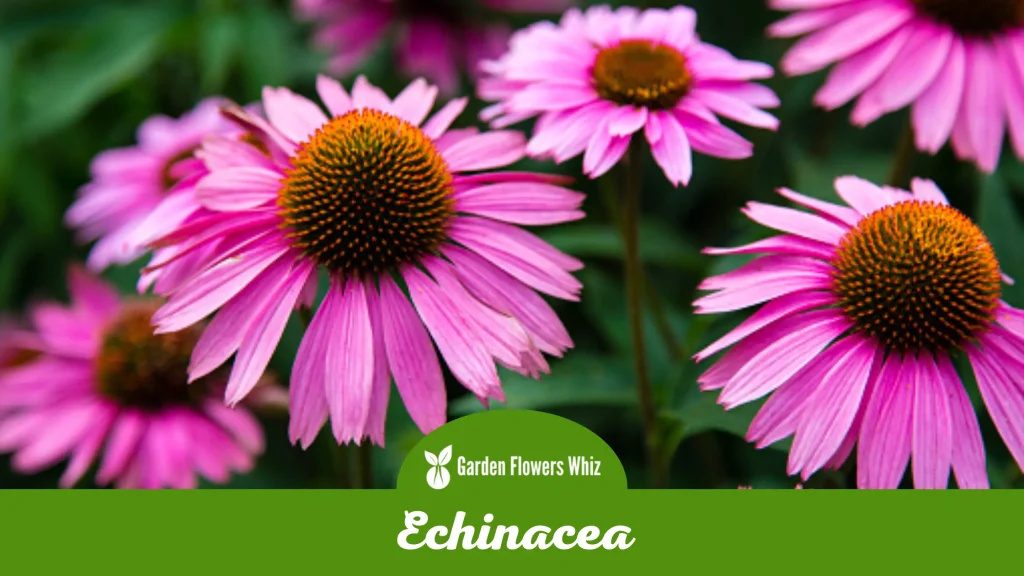
Echinacea is a genus of herbaceous flowering plants in the daisy family that is indigenous to North America and is commonly referred to as coneflowers.
The plants produce huge, spectacular flowers with cone-shaped centers and drooping petals on tall stems that can grow as high as 4 feet.
Purple, pink, and white are just a few of the many colors that echinacea blooms may be found in. In addition to its use as a medicine, echinacea is frequently grown for landscaping and gardens.
It is a resilient plant that is simple to cultivate and care for and can flourish in a variety of soil types and lighting situations.
17. Eastern Purple Coneflower
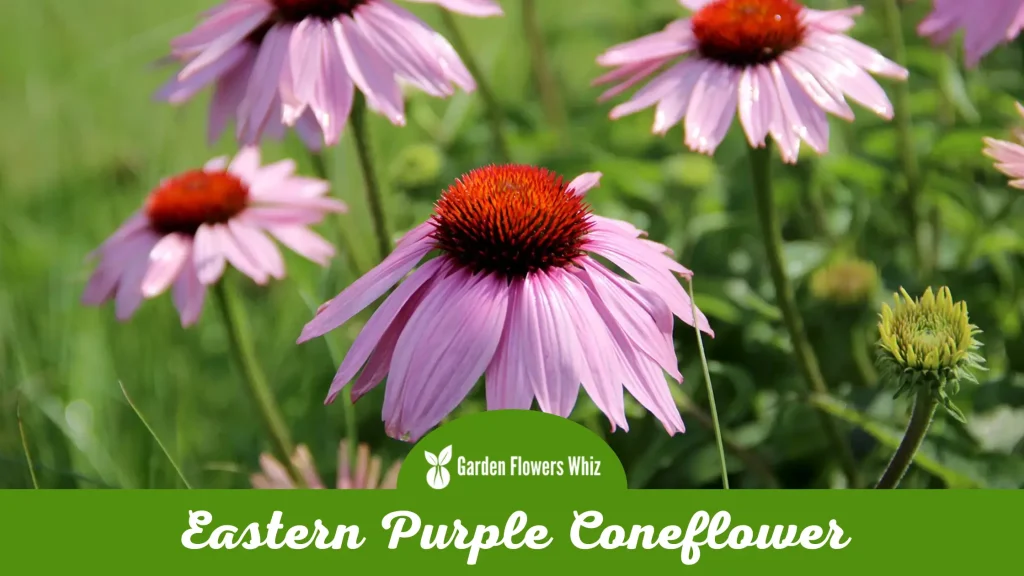
Eastern North America is home to the Eastern Purple Coneflower, often known as Echinacea purpurea, a herbaceous flowering plant in the daisy family.
It is a perennial plant that normally reaches heights of 2 to 4 feet. Its huge, spectacular blossoms include drooping petals in pink and purple with a distinctive purple cone-shaped center.
With their stunning, long-lasting flowers that draw a variety of pollinators, they are frequently cultivated in gardens and landscape applications.
Eastern Purple Coneflowers may grow well in a variety of soil types and lighting situations and are hardy and simple to maintain. They are a preferred option for gardeners and landscapers since they can withstand drought and require little upkeep.
18. Eastern Coneflower
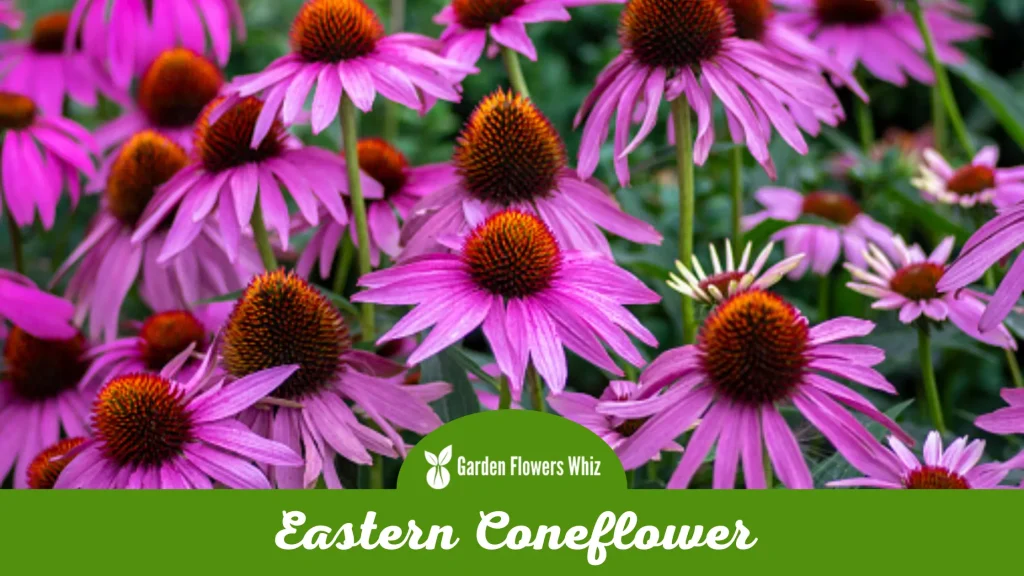
Eastern North America is home to the Eastern Coneflower, commonly known as Rudbeckia fulgida, a perennial flowering plant of the sunflower family.
It is a tall plant that can grow up to three feet tall and bears spectacular, oversized flowers with bright yellow petals and a dark brown core.
Eastern coneflowers are frequently cultivated in gardens and landscaping because of their colorful, long-lasting blooms.
Also, they can benefit nearby ecosystems because they are very alluring to pollinators like bees and butterflies.
Because they are resilient plant that is simple to cultivate and maintain and can flourish in a variety of soil types and lighting situations, they are a popular option for gardeners and landscapers.
19. Ear-Leaved Tickseed
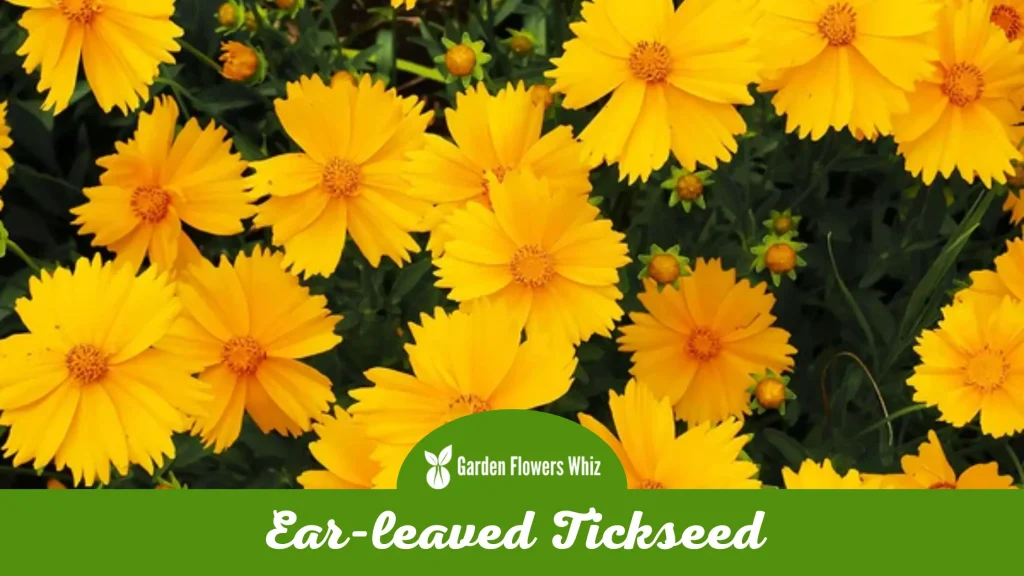
Coreopsis auriculata, often known as the ear-leaved tickseed, is a herbaceous flowering plant that is indigenous to the Southeast of the United States and belongs to the sunflower family.
It is a low-growing perennial with clumps that bloom in profusions of bright yellow, daisy-like blooms with black centers, usually growing to a height of 1 to 2 feet.
Ear-leaved Because of its beautiful, durable blossoms, tickseed is frequently cultivated in gardens and landscaping projects.
It is a resilient plant that is simple to grow and maintain, can flourish in many soil types and can thrive in a variety of lighting circumstances, making it a popular choice for gardeners and landscapers.
This plant is adaptable and suitable for a wide range of uses, including ground cover, rock gardens, and borders.
In Summary
The beauty and diversity of the natural world have been glimpsed via the study of flowers whose names begin with E.
Each flower has its own special charm and importance, from the graceful elegance of the Eustoma to the fragrant Eucalyptus blossoms and the cheery blooms of the Echinacea.
These flowers have had a significant impact on human history and continue to awe and fascinate us today, whether they are appreciated for their decorative worth, therapeutic benefits, or cultural symbolism.

Stacey Hernandez is a seasoned botanist with over 16 years of experience in the field. Her passion for plants and their intricate workings began at a young age, and she has since devoted her life to studying and understanding them.
Stacey’s expertise extends to a wide range of plant species, from delicate flowers to towering trees. As the founder of Garden Flowers Whiz, Stacey has created a platform for plant enthusiasts to seek guidance and advice.
Her website is a go-to resource for those seeking answers to their gardening dilemmas, whether it’s how to care for a particular plant or which species to choose for a specific climate.
